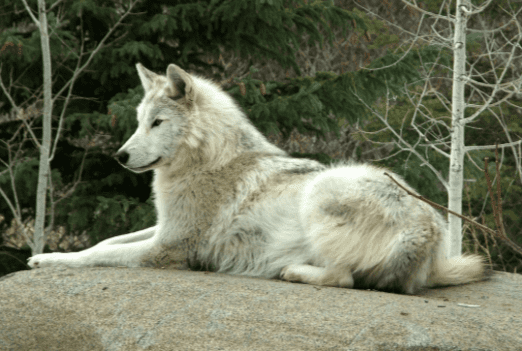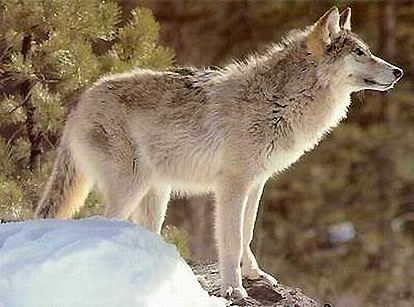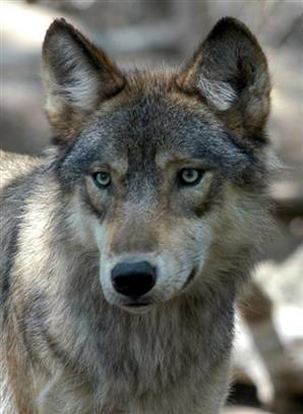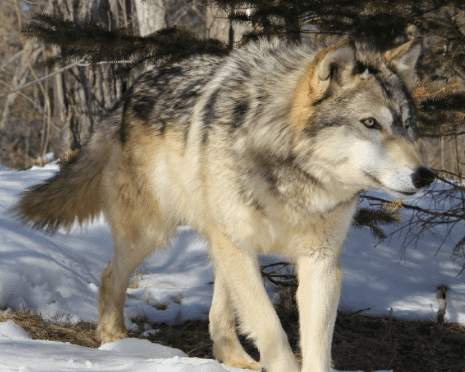Higher classification Gray wolf | Phylum Chordata Scientific name Canis lupus nubilus Rank Subspecies | |
 | ||
Similar Gray wolf, Canis, Northwestern wolf, Vancouver Island wolf, Arabian wolf | ||
The Great Plains wolf (Canis lupus nubilus), also known as the buffalo wolf, dusky wolf or loafer, is a subspecies of gray wolf whose range once extended throughout the Great Plains from southern Manitoba and Saskatchewan southward to northern Texas. It is a medium-sized subspecies of variable color, with most specimens being light colored, though black individuals do occur. Adult males typically weigh 100 lb (45 kg), though exceptionally large individuals weighing 150 lb (68 kg) have been recorded. Along with C. l. occidentalis, with which it shares a long and complex border, the Great Plains wolf is the most widely spread North American gray wolf, with at least 11 different synonyms.

It was first described in 1823 by Thomas Say in his writings on Major Stephen Long's expedition to the Great Plains. Though currently recognized by taxonomists as a distinct subspecies, C. l. nubilus is the most difficult North American gray wolf to evaluate, as it has a long history of being in contact and interbreeding with other gray wolf populations (C. l. baileyi and C. l. occidentalis), eastern wolves, red wolves and also hybridizing with eastern/red wolf-coyote hybrids. It has long been suspected that hybrizations with eastern wolves may have resulted in coyote genes being transmitted into the C. l. nubilus population in the western Great Lake regions since unlike the red wolves and eastern wolves, C. l. nubilus are not known to directly hybridize with pure coyotes. C. l. nubilus likely crossed the Bering Land Bridge into North America after the more basal C. l. baileyi, pushing the latter subspecies southwards as it expanded its range. By the last ice age, C. l. nubilus was gradually displaced from its northwestern range by the newly arrived C. l. occidentalis, a process which has continued till present times.

Early texts, including those of Lewis and Clark, indicate that C. l. nubilus was abundant throughout the Great Plains, outnumbering local coyotes. Alexander Henry mentioned wolves several times in his writings on his trips to North Dakota, noting how they fed extensively on bison carcasses, and were bold around humans, sometimes approaching people and entering tents. He recorded that Native tribes occasionally dug up wolf pups and dug large pitfalls to capture adults, while Maximilian of Wied recorded that they would sell wolf pelts in exchange for two rolls of tobacco each. Though still common by the mid-1800s, a combination of railroad construction, human settlement, the development of stock grazing and the subsequent extermination of bison pushed C. l. nubilus to the remoter regions of its range where the terrain made agriculture impracticable.

Howling great plains wolf



